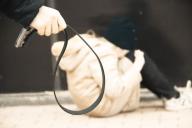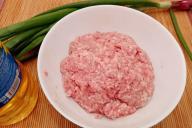Many dog owners have observed their pets happily chasing and chewing on sticks.
It would seem like harmless entertainment, but in fact it conceals many dangers.
Why do veterinarians strongly recommend weaning dogs off this habit?

Risk of oral trauma
Sticks often cause serious injuries. Sharp edges can cut a dog's gums, tongue, or palate.
In some cases, splinters get stuck between teeth or dig into soft tissues, causing inflammation and pain. Situations are especially dangerous when a dog tries to grab a thrown stick while running - a sharp blow can lead to a throat injury or even a puncture of the palate.
Digestive problems
When a dog chews on a stick, small pieces of wood inevitably end up in the stomach. There, they can irritate the mucous membrane, cause indigestion, or even cause intestinal blockage. In severe cases, surgery may be required to remove foreign bodies.
Splinters
A stick lover risks getting a splinter not only in the mouth. Splinters can get stuck in the paws, especially if the dog is actively gnawing on its prey. Removing such splinters is a painful and unpleasant process for both the pet and the owner.
Toxicity of some tree species
Not all trees are safe for dogs. For example, yew is considered poisonous to most animals. Chewing sticks from such trees is especially dangerous - it can lead to serious poisoning.
Parasites and bacteria
Sticks picked up on the street can be a source of various parasites and pathogenic bacteria. Fungi, mold, helminth eggs - all this can end up on a seemingly harmless branch.
Psychological dependence
The passion for sticks can develop into a real obsession. The dog begins to ignore the owner's commands, trying to get to the treasured stick at any cost. Such behavior interferes with normal socialization and training.
Alternatives to poles
Luckily, there are plenty of safe alternatives. Special dog toys are made from durable, non-toxic materials. Not only are they safe, but they also help keep your pet's teeth and gums healthy.
Rubber balls, ropes, frisbees – the choice is huge. It is important to choose a toy that matches the size and temperament of the dog. Toys that can be thrown are suitable for active pets, and for those who like to chew – special bones made of durable rubber.
How to wean off sticks
It is not easy to break a dog of its favorite habit, but it is possible. Start by removing all sticks from the pet's reach. During walks, distract its attention with alternative toys.
Praise and reward for playing with safe objects. Don't scold your dog if it grabs the stick. Just calmly take it away and offer something more interesting in return. Gradually, your pet will understand that new toys are much more exciting.








